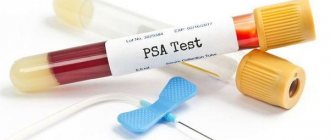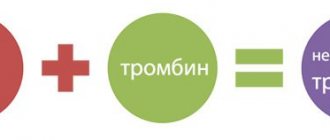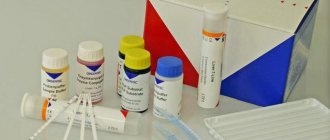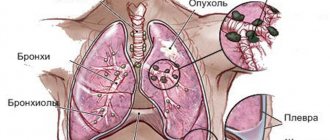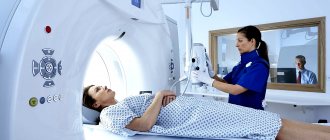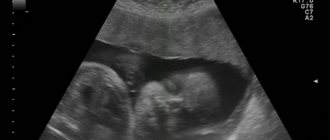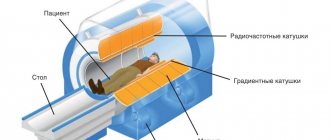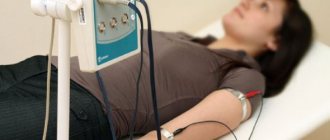The tumor marker CEA occupies an important place in the diagnosis of cancer. Tumor markers are highly specific proteins produced by tumor cells. Indicators of tumor markers in the blood increase in direct proportion to the active growth and metastasis of a malignant neoplasm.
Often the tumor marker CEA is attributed to belong only to women's diseases. However, in relation to gender, CEA analysis is used only in the diagnosis of mucinous and serous ovarian cancer. In all other cases (except prostate cancer), CEA is involved in the main tests without regard to gender.
And even when diagnosing metastases in bone tissue, the CEA tumor marker takes precedence, regardless of gender. It should be noted that tumor markers can moderately increase in tumors of a benign nature and some somatic pathologies.
What is REA and why is it needed?
The abbreviation CEA stands for cancer embryonic antigen. What does the CEA tumor marker show and why is it needed? Determination of carcinoembryonic antigen is used to diagnose cancer. First of all, for diagnosing cancer of the rectum and colon. Normally, its content is very low, but if it becomes slightly higher or reaches very high values, then the occurrence of an oncological process should be suspected. Because of this, it is classified as tissue markers of oncology or tumor markers.
An analysis for the tumor marker CEA (Cea) is applicable for primary diagnosis, for monitoring the progress of the disease and the results of treatment for some types of cancer. First of all, this is oncology of the large intestine and rectum; under such circumstances, the test has increased sensitivity, and this point allows it to be used in primary diagnosis.
Also, CEA indicators can increase in case of cancer of the ovaries, prostate, stomach and pancreas, breast, with metastases to the liver and bones (but in this case the sensitivity of the marker is much lower).
In addition to the primary diagnosis of cancer, this method is also used to monitor the consequences of treatment. After surgical intervention to excise tumor matter, the value of the CEA tumor marker drops to normal within two weeks. Further tests help check the patient’s condition and prevent relapses of the disease in time.
It should be noted, however, that this test is not tumor specific. The level of this tumor marker may also increase in other diseases, non-oncological in nature, inflammatory and benign tumors.
The concentration of the tumor marker CEA may increase in benign diseases of the intestines, liver, pancreas, lungs, liver cirrhosis, cysts, chronic hepatitis, pancreatitis, pneumonia, tuberculosis, emphysema, autoimmune diseases in 20-50% of patients. When the disease worsens, the indicator tends to increase, and when the condition improves, it returns to normal. If a malignant process occurs in the body, then the level constantly increases.
In addition to all of the above, an increase in the concentration of CEA (carcinoembryonic antigen - CEA) may be associated not directly with pathology, but with constant smoking or consumption of alcoholic beverages.
It can also be noted that the tumor marker norm for men and women is no different. But the use of this tumor marker to study the body for the presence of cancer cells in the female organs provides much less information. For greater reliability and information content, women are prescribed this study in combination with other examinations.
What does the embryonic gene show?
Tumor markers in human blood are used to diagnose and treat cancer. In the presence of cancer, the level of antigen increases. The presence of the number of markers evaluates the disease and the effectiveness of treatment. Based on the presence of a substance, it is impossible to determine an exact diagnosis, only suspicions: if it is elevated, then there are deviations. If the number of markers is increased, the patient is prescribed additional examinations. CEA shows the possible presence of cancer, but the final diagnosis is made after a complete examination of the body.
Features of the antigen
CEA – carcinoembryonic antigen. Discovered in 1965 by Dr. S. Friedman and other doctors. The antigen is derived from the stomach cells of a cancer patient. The antigen molecule, glycoprotein, has a molar mass in the range from 181 to 201 thousand Daltons. The cell has a greater angle than that of proteins by 60%.
Having deciphered the chemical composition, we found out that CEA is bound to heterooligosaccharides and shows a protein nature. Today, the significance of the antigen for an adult is unknown. During ontogenesis in a child, the substance is secreted in large quantities by the epithelium of the stomach and participates in cell division, accelerating it. The substance produced is called a glycoprotein, abbreviated as CEA.
CEA is found in minimal doses in the epithelium of the lungs and digestive organs. In an adult, organs produce small amounts of the substance. A small amount of synthesis occurs in the mammary glands. The substance is almost not found in the blood during pregnancy.
Significance in the body
The antigen substance is important for laboratory research, a little less for biological values.
It is considered the main indicator for detecting cancer tumors. The name "fetal" indicates that the protein is important during the developmental stages of the fetus. The detection of a gene by an immunochemical reaction is called an antigen. Its action is aimed at communicating with specific antibodies.
The tumor marker does not show antigenic characteristics and is not involved in the processes of the immune system. In the human body, protein antigen does not produce antibodies for immunity.
Leading clinics in Israel
Assuta
Israel, Tel Aviv
Ikhilov
Israel, Tel Aviv
Hadassah
Israel, Jerusalem
Indicator norm
Normally, the value of the CEA tumor marker in men and women should be as follows:
| Floor | Smoking | Non-smokers |
| Men | from 0.83 to 9.0 ng/ml. | from 0.15 to 6.5 ng/ml. |
| Women | from 0.75 to 8.0 ng/ml. | from 0.1 to 6.0 ng/ml. |
A slight increase in the component can be observed in women carrying a child, as well as in representatives of the fair sex over 50 years of age. This reaction is natural and is associated with hormonal changes and an increase in protein levels.
In malignant tumors, the tumor marker CEA always shows an increase and significantly deviates from the norm. The same result will occur if therapy does not produce a positive result. It should be borne in mind that a negative test value does not always indicate the absence of cancer.
That is why patients with a hereditary predisposition are often prescribed additional blood tests for tumor markers. Also, additional tests are always prescribed for people with weak immune systems.
People over 50 years of age who suffer from diseases of the gastrointestinal tract and are prone to cancer should take a CEA test every year.
Cases when studies are prescribed for the CEA tumor marker
Testing for the CEA oncotest is prescribed in the following situations:
- When there is a suspicion of the presence of a tumor of the lungs, pancreas, ovaries, rectum, colon, breast;
- If you suspect the occurrence of metastases in the liver and bone tissue;
- After surgery to excise a cancerous tumor;
- For monitoring during treatment of a malignant tumor;
- For long-term follow-up after completion of cancer treatment.
In what cases does a patient need to undergo examination?
If formations are detected on photographs or ultrasound, the patient is prescribed examinations for carcinoembryonic antigen. Signs showing cancer pathologies in people:
- density of female mammary glands;
- change in color of the nipple;
- irregular structure and enlargement of the mammary gland;
- discharge of sticky fluid from the nipples;
- violation of the period of menstruation;
- drops of blood or bleeding from the anus;
- blood with odor from the vagina;
- constant urination;
- stomach problems;
- frequent nausea and vomiting;
- weight loss or gain for no apparent reason;
- heavy sweating;
- thickening of the lymphatic organs;
- fatigue, drowsiness;
- mental disorders.
The analysis is carried out throughout the course of therapy to monitor the dynamics of the action of drugs and exclude the spread of metastases during surgical removal of the tumor. After completion of treatment, the patient undergoes rehabilitation with constant antigen monitoring to exclude complications and detect early relapse.
Results of the oncotest for carceoembryonic antigen (CEA)
Remember! Using the results of a study of the CEA tumor marker in isolation from other diagnostic methods is unacceptable. A comprehensive examination is required to make a diagnosis.
A normal level of CEA in the blood indicates a minimal risk of cancer. In addition, such a low level is possible if this tumor marker is insensitive to this type of tumor. There are also some differences in the norm for the level of CEA for smokers and non-smokers, the so-called reference values:
- For smokers – within 0 - 5.5 ng/ml;
- For non-smokers – 0 – 3.8 ng/ml.
The main reasons for the increase in REA data:
- Cancerous tumors of the rectum, colon, pancreas, mammary glands, lungs, lymphatic system;
- Metastases of cancer tumors in the bones and liver;
- Autoimmune diseases;
- Relapses of oncology;
- Chronic hepatitis and liver cirrhosis;
- Ulcerative colitis;
- Kidney failure;
- Pancreatitis;
- Tuberculosis, pneumonia, emphysema, bronchitis;
- Crohn's disease;
- Smoking.
Small increases in tumor marker levels may be associated with benign diseases in the acute stage, but these may also be the initial stages of malignant processes.
Remember! Repeated tests must be done in the same laboratory, since another may use its own methods, which is why the results may vary.
A significant increase in the CEA cancer marker may indicate the presence of a cancerous tumor. The presence of metastases can increase this tumor marker tenfold.
At the same time, a decrease in the level of tumor markers can be observed with:
- Remission of a benign tumor;
- Surgical removal of cancer cells;
- Successful oncology therapy.
Remember! A negative test result does not completely exclude the presence of cancer in the body.
To confirm or refute the diagnosis, the following tests may also be prescribed:
- MSA;
- CA 242;
- CA 125;
- CA 15-3;
- CA 19-9;
- CA 72-4;
- Chromogranin A;
- RKS (extended colposcopy);
- Beta-2-microglobulin (B 2 mg) in serum (in urine);
- Alpha fetoprotein (AFP);
- Pro grp (small cell lung cancer), etc.
Additional tests (for example, a biochemical blood test) are designed to give a more accurate picture of the disease to prescribe treatment and select the necessary therapy. The overall picture of the disease can only be formed using a deciphered combination of tests.
Don't waste your time searching for inaccurate cancer treatment prices
*Only upon receipt of information about the patient’s disease, a representative of the clinic will be able to calculate the exact price for treatment.
Reasons for changes in tumor markers in the blood
A slight change in a tumor marker in the blood occurs for various reasons, including those not related to cancer.
Increased tumor marker
An increase in blood levels requires a thorough examination of the body and signals the presence of problems:
- malignant formation in the digestive organs (intestinal tract, stomach, pancreas);
- breast cancer;
- lung pathologies;
- penetration of metastases into bone tissue and liver;
- complication of the disease after surgery;
- acute hepatitis;
- cirrhosis of the liver;
- pancreatitis in complex form;
- ulcerative colitis;
- polyps (benign);
- viral pathologies - pneumonia or bronchial asthma;
- pathological disorders of the walls of the pulmonary alveoli;
- bone inflammation;
- problems in kidney function;
- Crohn's disease;
- autoimmune disorders.
Low CEA level
A low tumor marker value indicates that:
- there are no malignant pathologies;
- onset of remission;
- the desired method of treating oncology.
The problem with determining the exact location of the tumor is the fact that tumor markers are produced by different human organs. The marker produced by a certain organ is different from others; each one must be examined. A table of 20 tumor markers has been compiled for mandatory study during testing.
How is a blood test performed and what does it mean?
Tumor marker testing is carried out using chemiluminescence immunoassay. The decoding is given in nanograms per milliliter of blood. Blood taken from a vein is used for the study. To ensure accurate results, you must follow some rules:
- Before donating material (blood) for analysis, do not eat for eight hours; you are only allowed to drink clean water;
- The day before donating blood, do not smoke;
- Half an hour before donating blood for analysis, avoid physical activity and emotional stress;
- Avoid taking all kinds of medications 2 weeks before the test;
- The day before the analysis, it is recommended to exclude fatty, fried, spicy and alcohol from the diet.
Sometimes, instead of the usual material for analysis - venous blood, urine is taken for analysis.
Indications for the study
Rea analysis is carried out during standard screening of high-risk groups (complicated heredity, work in chemical
production, Crohn's disease, ulcerative colitis, etc.), to control the quality of treatment and early detection of relapses and metastases.
CEA analysis is also indicated for patients with symptoms of colorectal cancer, namely:
- detection of blood streaks in stool;
- positive occult blood test;
- intestinal bleeding;
- frequent alternations of constipation and diarrhea;
- sudden weight loss;
- increased ESR in the analysis (without other signs of the inflammatory process);
- anemia;
- the presence of a palpable or visualized (ultrasound, MRI) dense formation;
- pain and cramps in the abdomen;
- discomfort during bowel movements;
- constant urge to defecate and a feeling of “full” bowel movements.
Attention. It is important to remember that most often, the first signs of a malignant neoplasm are: unexplained, pronounced weight loss, weakness, lethargy, increased ESR and anemia in tests. Specific symptoms due to the location of the tumor appear much later.
How to take a blood test
There is no specific preparation for tumor marker analysis. Blood is taken as standard - from a vein. Half an hour before taking the material, avoid nervous and physical stress. Considering that smoking and alcohol have a significant impact on the indicator, smoking is excluded at least 24 hours, and alcohol consumption is excluded seven days before the analysis.
How to decipher the analysis
As has already been noted, the CEA antigen standards for smoking and non-smoking categories differ. But in any case, the data obtained should not go beyond these numbers. If the level of CEA is increased several times, then this indicates a malignant cancer process occurring in the body. And if the increase in level is tens of times higher than the standards, then this indicates a disappointing result - there are metastases. The tumor marker indicators obtained when deciphering the analysis are checked using a special table, which indicates possible excesses for various diseases.
Indicators that do not exceed normal limits do not exclude the presence of cancer, since a number of people may be insensitive to this tumor marker.
Indications for testing
A blood test for CEA is necessary during standard screening of individuals at risk for:
- Crohn's disease;
- working with chemicals in hazardous industries;
- hereditary predisposition;
- ulcerative colitis.
The study of the CEA marker is carried out to identify the effectiveness of oncology treatment, as well as to promptly determine the occurrence of relapse. A test for this antigen is carried out when cancer symptoms appear. The clinical picture, depending on the location of the tumor process, can be varied, but general signs include:
- Sudden and significant loss of body weight;
- Increasing weakness, low performance;
- Increased erythrocyte sedimentation rate (ESR) in a general clinical blood test.
If the marker result is positive, it is necessary to conduct a full examination, including instrumental and laboratory diagnostic methods.
Cancer therapy
For a positive prognosis of the disease, you need to contact a competent specialist, since, unfortunately, treatment with folk remedies in the treatment of cancer is powerless.
The main method in the treatment of cancer (after diagnosis using cancer tests and other diagnostic procedures) is surgery. But this is not the only treatment method - radiation therapy and chemotherapy are also used. Hormone therapy and immunochemistry can be used as additional treatment methods. But still, the most effective method remains surgery to remove such a cancerous tumor. And here it is important not to miss the moment when such intervention is still possible. This is why it is so important to diagnose cancer in its early stages. The CEA tumor marker, whose readings show a complete picture of the condition of many internal organs, will help to identify a dangerous disease in time and begin treatment and reduce the risk of its unfavorable outcome.
Features of the tumor marker
The CEA tumor marker has the highest specificity for gastrointestinal cancer. Using a CEA blood test, the presence of pathology can be detected long before the first signs appear. One of the features of this antigen is that its level is affected by smoking. So, in people who smoke, the concentration of the marker is higher than in those who do not smoke. In addition, the rates for men are slightly higher than for women. A tumor marker is used to diagnose cancer, but since it can be detected in the body of people not only with a tumor, but even in patients with colds, even with a positive result, it is necessary to retake the test and undergo additional examination.
CEA as a diagnostic tool for cancer
If a patient is diagnosed with cancer, the CEA tumor marker (CEA) is examined several more times. The first time a repeat analysis is done to confirm the suspected diagnosis. In this case, not only the concentration of CEA is detected, but also other cancer markers.
If the disease does not require surgical intervention, the patient will have to donate blood for CEA every two months so that the physician can evaluate the effectiveness of the prescribed treatment regimen and, if necessary, adjust it. Periodic implementation of such a procedure helps to predict the further development of the disease and minimize the risk of metastasis to other organs.
Example of a form for analysis results on REA
If the patient has been prescribed surgical treatment for the tumor, blood donation for CEA is necessary to determine the risk of relapse and the likelihood of the formation of a secondary tumor. Doctors claim that if the levels do not increase over the course of 2 years, this indicates the onset of remission and indicates a favorable prognosis for the patient.
During dispensary observation of the treated patient
Regular CEA testing is recommended for all patients undergoing treatment for colon cancer. Carrying out this study over time allows for timely detection of tumor relapse and the development of metastatic tumors. An increase in REA levels after normalization indicates the return of the disease. Moreover, it should be noted that a sharp jump in CEA concentration is observed several weeks before the onset of clinical manifestations of the disease.
Important
The above information should not be used for self-diagnosis or self-medication. Diagnosis of any disease should be carried out exclusively by a qualified physician.
Zubkova Olga Sergeevna, medical observer, epidemiologist
17, total, today
( 49 votes, average: 4.80 out of 5)
Blood clotting test: research methods
How is blood taken from a vein for analysis from an infant?
Related Posts
Cancer: danger, consequences, causes
The disease, commonly known as “cancer,” is a malignant neoplasm that develops when normal cells begin to degenerate and change. Over time, the tumor grows into healthy tissues of the body, forming metastases, and in the absence of timely treatment, it can “take over” the entire body. This disease goes through four stages, and only at the last, fourth, metastases appear, which are almost impossible to cope with.
During metastasis, foci of cancer are spread throughout the body through the bloodstream or lymph. This process is irreversible, and therapy can only slightly alleviate the patient’s condition and briefly prolong his life. If a small part of the tissue is affected by metastases, they can be removed surgically, and nearby healthy tissue is usually removed to prevent relapse of the disease. Chemotherapy is most often used for treatment; this type of treatment can stop or slow down the spread of metastases.
If you regularly undergo preventive medical examinations and take the necessary tests (including tumor markers), you can detect cancer at an early stage, and this gives a very high chance of recovery. If alarming symptoms appear, you should immediately consult a doctor for examination. Analysis of the CEA tumor marker will allow its values to determine the presence of a malignant tumor in the body, the stage of the disease, and also prevent the appearance and development of the disease.
Causes of cancer
Until now, doctors and scientists are struggling with the question of what exactly is the main cause of cancer, because people of all ages, social status and living in different conditions suffer from this disease. Sometimes even leading a healthy lifestyle does not save a person from a malignant tumor. Today, there are a number of external factors that can trigger the occurrence of cancer:
- physical (these include UV radiation, radiation);
- chemical (cancer can occur as a result of consuming various carcinogens contained in drugs, cigarettes, alcohol);
- biological (primarily viruses and the consequences of viral diseases).
In addition, we can identify an internal factor that leads to a weakening of the immune system and gives impetus to the degeneration of cells - stress. There are statistical data showing that the majority of cancer patients experienced serious psychological stress just before the onset of the disease. Therefore, it is very important to protect yourself from negative emotions and also try to lead a healthy lifestyle. This will significantly increase the chances that the terrible disease will pass by.
Tumor marker AFP Alpha-fetoprotein
AFP is similar in composition to albumin. In adults, the AFP norm is usually within 15 ng/ml.
Concentrations above 10 IU (international unit)/ml are considered pathological. An elevated AFP level may indicate the presence of the following malignant diseases:
- Primary liver cancer (hepatocellular carcinoma)
- Metastases of other malignant tumors to the liver (in breast cancer, rectal and sigmoid colon, lung cancer)
- Teratocarcinoma of the yolk sac, ovary, or testes (embryonic carcinoma)
AFP levels may increase in some benign diseases, such as liver cirrhosis. chronic and acute hepatitis, chronic renal failure. During pregnancy, an increase in AFP may be a sign of fetal malformations.
AFP is detected in blood plasma, amniotic fluid, bile, pleural and ascitic fluids.
Advice for patients
If carcinoembryonic antigen is detected, you should not get upset and imagine pathologies that you may not have. It is necessary to donate blood again for testing to confirm or refute the diagnosis.
Remember, a diagnosis is never made based on just one test result!
There is also the opposite situation, when CEA is within normal limits, but the possibility of developing cancer should not be rejected. To do this, you can donate blood for other tumor markers, which may be more specific and sensitive than this embryonic protein.
What other studies are needed to determine oncology?
If the decoding of the CEA tumor marker is uninformative, additional studies are prescribed for other tumor markers, a general analysis of urine and blood, tests for beta-3-microglobulins in the urine and blood, and various cancer antigens. Also, for accurate diagnosis, magnetic resonance imaging is recommended, which will show the presence of pathological cells not only in organs, but also in fluids and body systems.
Please note that the normal CEA tumor marker is the same for men and women. A slight difference can only be detected in the case of bad habits and the degree of their severity (chronic smoking with experience, alcohol, drugs).
CEA as a method for monitoring the course of the disease
A decrease in this antigen, as a rule, can be observed after surgical removal of a malignant tumor at 8-12 weeks.
If reference values are not restored, it makes sense to conduct a re-diagnosis. This phenomenon indicates a possible incomplete resection of the malignant tumor. Among patients diagnosed with cancer, this method is used as observation every 3 months. In patients with test results within normal limits before surgery, the test is effective only in 64-65% of cases. The presence of this antigen in the blood serum indicates a treatment effectiveness of 92%.
Can complications arise during the study?
Complications may occur during the test, but are usually rare. The patient experiences high sensitivity in the injection area, and a bruise may also appear. Vein swelling may occur in rare cases. Applying warm compresses for several days will significantly alleviate symptoms.
Important to know: You cannot rely on the result of this test alone to make a diagnosis, because the CEA test is not completely specific for malignant tumors.
Decoding the results
Only an experienced specialist should decipher information obtained during testing. There is no point in trying to understand the figures obtained on your own, since in the absence of medical education the likelihood of correct interpretation is low.
Only a doctor can make a final diagnosis, based on the results of the CEA analysis and other examinations prescribed for the patient. In most cases, decoding the analysis takes no more than 8–10 days. If the results are needed urgently, it is better to carry out the analysis in a private laboratory, since paid clinics provide information faster.
Primary diagnosis of malignant tumor
A normal level of CEA in the blood of the subject is interpreted as a sign of a low risk of cancer. If the value of the test indicator exceeds the norm, the doctor may suspect the following ailments:
- oncological pathology;
- intestinal polyposis;
- severe liver damage;
- pancreatitis;
- emphysema;
- Crohn's disease;
- cystic fibrosis;
- chronic renal failure;
- autoimmune diseases.
In case of malignant tumors, the considered indicator usually increases several times (and grows steadily), but if the disease is non-oncological, the CEA level slightly exceeds the laboratory reference values.
Important
It must be remembered that a negative test result does not exclude the presence of cancer.
Diagnosis of any disease is carried out on the basis of a comprehensive examination, including the use of several research methods. Therefore, if a person has any clinical signs indicating that cancer is possible, it is necessary to continue the diagnostic search and in no case stop at the CEA analysis.
Preparing for analysis
For CEA analysis to produce reliable results, it is necessary:
- donate blood on an empty stomach;
- do not smoke or drink alcohol at least 24 hours before the test;
- limit physical and emotional stress on the day of the analysis.
Taking blood for testing should be carried out before other medical diagnostic procedures (especially before colonoscopy, biopsy, etc.). In addition, it is not recommended to take any medications on the day of delivery or the night before. If this is not possible, it is imperative to inform the laboratory about the treatment being received.
